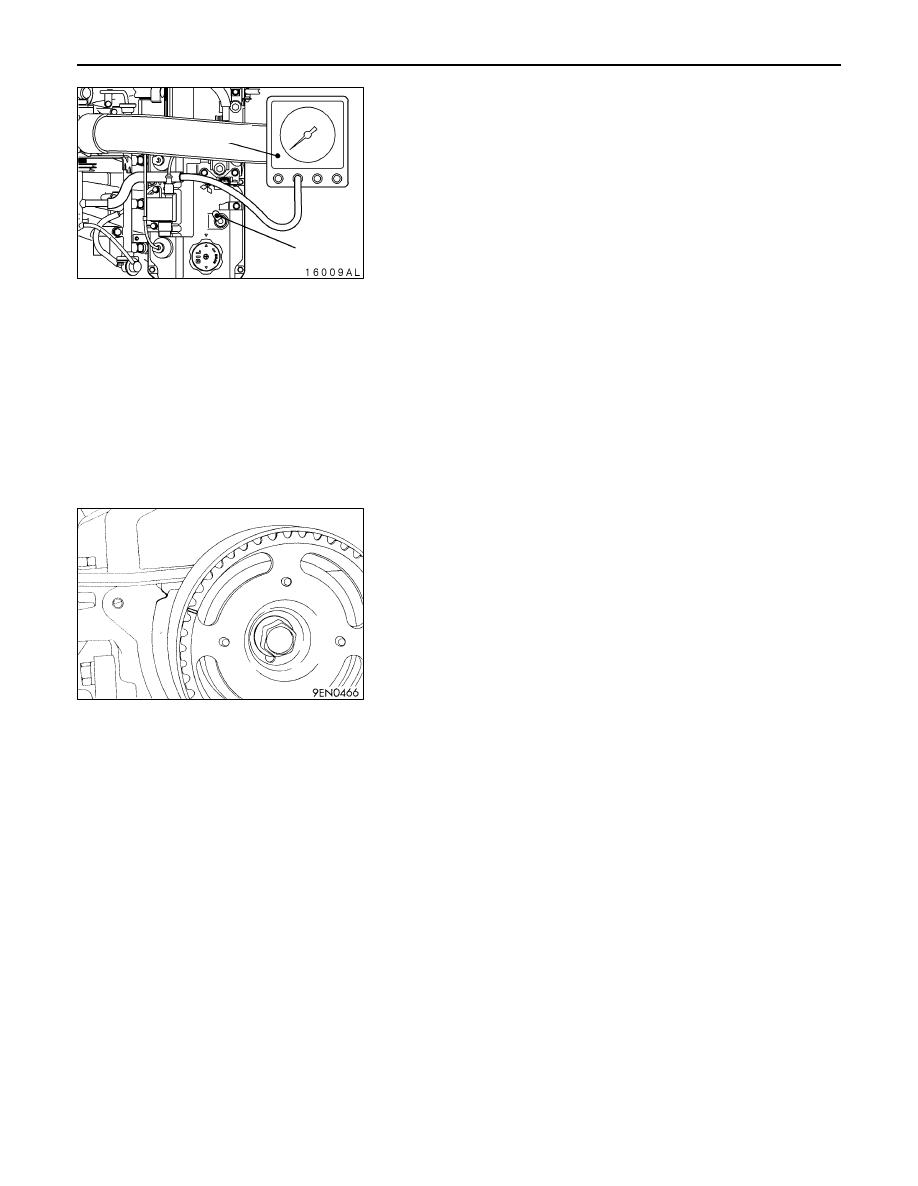Mitsubishi Pajero Pinin. Manual - part 25

ENGINE <4G9-MPI> –
On-vehicle Service
11B-11
MANIFOLD VACUUM CHECK
1.
Before inspection, set the vehicle to the pre-inspection
condition.
2.
Turn the ignition switch to LOCK (OFF) position.
3.
Connect the engine tachometer or connect the MUT-
II
to the diagnosis connector.
4.
Disconnect the ventilation hose from the positive crankcase
ventilation (PCV) valve, and then connect a vacuum gauge
to the ventilation hose. Plug the positive crankcase
ventilation (PCV) valve.
5.
Check the intake manifold vacuum while the engine is
idling.
Limit: Min. 60 kPa
6.
Turn the ignition switch to LOCK (OFF) position.
7.
Remove the vacuum gauge, and then connect the
ventilation hose to the positive crankcase ventilation (PCV)
valve.
8.
Remove the engine tachometer or the MUT-
II
.
TIMING BELT TENSION ADJUSTMENT
1.
Remove the timing belt upper cover.
2.
Turn the crankshaft clockwise to set the No. 1 cylinder
to top dead compression centre.
Caution
As the purpose of this procedure is to apply the proper
amount of tension to the timing belt by means of the
cam drive torque, be sure not to rotate the crankshaft
in the opposite direction.
3.
Remove the access cover.
4.
Loosen the timing belt tensioner fixing bolt to apply tension
to the belt by means of the force of the tensioner spring.
Caution
The bolt can be loosened 90
_
– 180
_
.
If the belt is loosened more than necessary, the bolt
may fall inside the cover.
5.
Tighten the timing belt tensioner fixing bolt.
6.
Install the access cover.
7.
Install the timing belt upper cover.
Plug
Vacuum gauge